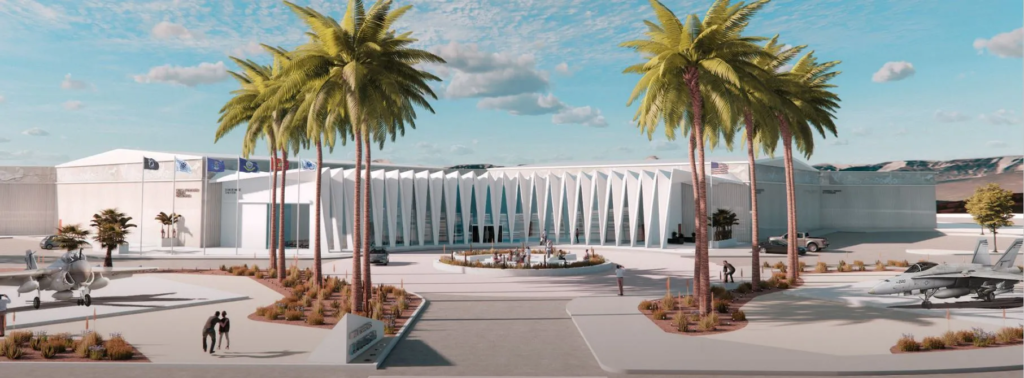HISTORY OF THE PALM SPRINGS AIR MUSEUM
In late 1993 the idea for a Palm Springs Air Museum sprang from the imaginations of four men: Charlie Mayer, Bill Byrne, Pete Madison and Dr. Mort Gubin. Charlie and Bill were conversing one day when a P-51 flew low overhead. Charlie said, "Why not an air museum with WWII Warbirds right here in Palm Springs?" Charlie was on the PS Airport Commission and told friend and fellow airport commissioner Pete Madison, a former P-38 pilot. Madison contacted his friend Bob Pond who was trained as a Naval Aviator and had been actively collecting and rebuilding Warbirds and classic cars in Minnesota. Pond was known as a person who could get things done. Pond attended a meeting and declared his willingness to help. Thanks to his support and contacts in aviation, the concept moved forward.
The Palm Springs City Council next came on board. Bill Byrne served on the Board of the Desert Water Agency. Between them they knew many key people who would help along the way. The fledgling organization incorporated, and the law firm of Best, Best & Krieger, and Lou Silva, CPA, gave their services pro bono. The Organizational Certificate of Incorporation of Palm Springs Air Museum, Inc. was dated January 5, 1994, and signed by Harold N. "Pete" Madison, Charles H. Mayer and Bill Byrne. The nine original Board of Directors were: Harold N. "Pete" Madison, Charles H. Mayer, Bill Byrne, Morton Gubin, M.D., John Lake, D.D.S., Philip Hixon, Rozene Supple, John Duncan and Harold Williamson. Messrs. Zack Pitts and Stan Rosine gifted the use of office space at 109 S. Indian Avenue. Things were beginning to take shape. A great deal of critical preliminary work was done by Secretary Bill Byrne and volunteer Harold Williamson who became President in December 1994.
Construction started in Feb 1996 and the Museum opened to the public with two hangars and 14 vintage aircraft on Nov. 11, 1996. Shortly after opening, plans were made to add a third hangar to the museum to house a B-17 bomber. In 1999, the hangar was completed and opened to the public. It would be another 18 years before another hangar would be added to the museum. The Major General Kenneth P. Miles hangar opened in 2017 to provide housing to the numerous Korea / Vietnam aircraft in the museum’s collection. Five years after the opening of the Korea / Vietnam hangar, the F-117 Pavilion officially opened in April of 2022. Housing the F-117A Nighthawk, the James R. Houston Pavilion is a state-of-the-art hangar.
Since 1996, the Palm Springs Air Museum has honored veterans who risked their lives to fight for freedom and democracy by educating visitors on the history and importance of aviation and air power. There are now over 70 vintage static and flying aircraft and five hangars: the Pacific (Navy), the European (Army), B-17, General Ken Miles Korea / Vietnam / Cold War, and the F-117A. The museum also has a gift shop, library, theater and café.
THE FUTURE OF THE PALM SPRINGS AIR MUSEUM

The Palm Springs Air Museum has officially announced plans to remodel the front of the facility. The project will cost $2.5 million and take two years to complete. It will re-structure how guests enter/exit the facility, as well as add a 200 seat classroom / presentation space.

